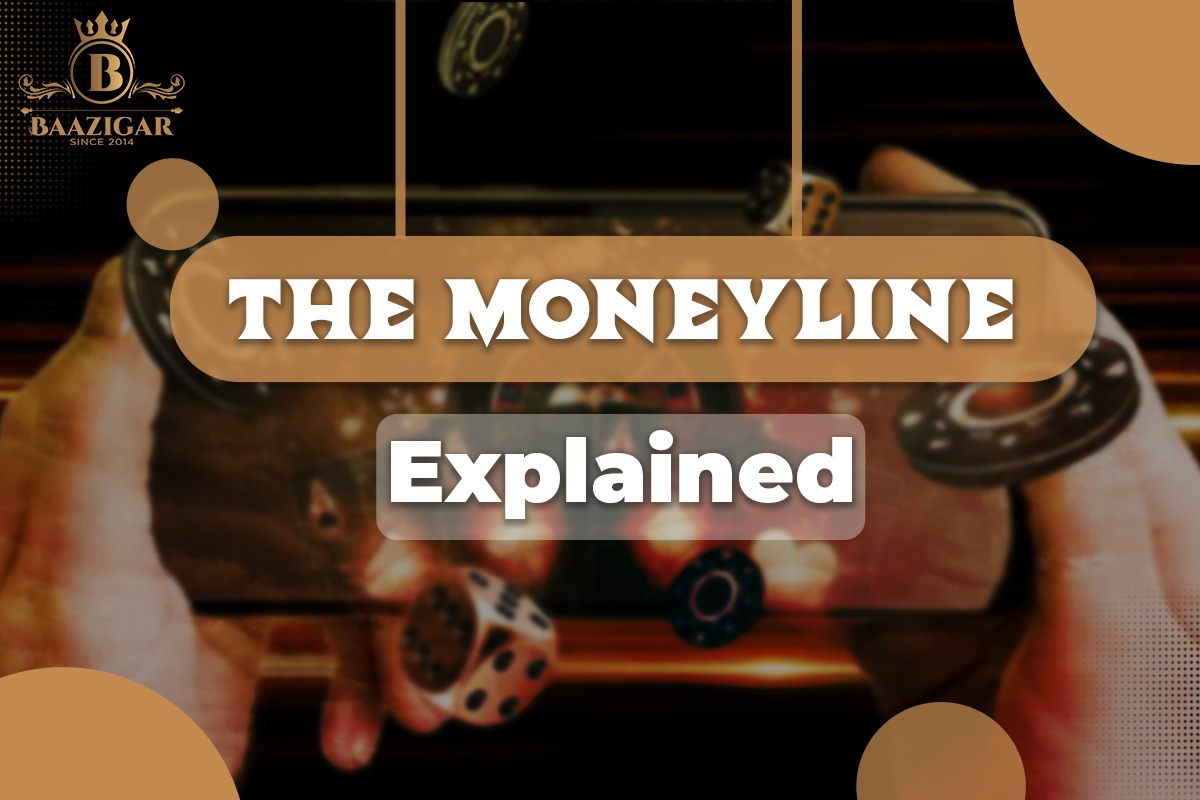How to Read Odds for Sports Betting

Sports betting is a thrilling way to make quick money and stay on top of the sport you grew up following. Just choose a market, place your stakes, and, if everything pans out well, expect a big payday. While strategies are key to your betting success, you cannot do without knowing how to read odds for sports betting.
What do odds mean in betting? Why do they matter? How to read them? What are some strategies to make the most of the odds? Let’s discuss it all and more, one at a time.
Betting Odds Explained:
Sports betting is all about stakes and payouts. You wager on a given outcome and your wins and losses hinge on the accuracy of your predictions. But what about the returns? How are they determined? Well, that’s where the odds kick in.
Odds numerically indicate the most likely outcome in a given scenario and the amount a successful bet will make. The outcome assigned a higher numerical value (odds) has a lesser chance. But if it comes true, your potential profits will be high, depending on the exact assigned odds. On the other hand, the lower odds indicate a more probable result with lower potential returns.
Here are sports betting odds explained with an example for stickier learning.
Suppose Real Madrid takes on Everton. The odds for the match would read something like this:
|
Everton: 5.00 |
Real Madrid: 1.50 |
According to the bookmaker, Everton’s chances are low, hence the higher odds. However, if you bet $100 on Everton and it pulls off an upset, your potential earnings would be $500 (5 times your initial stake).
Likewise, Real Madrid goes into the game as the favorite, which speaks for lower odds of 1.50. Now, a successful bet of $100 on Real Madrid would give you a potential profit of $50 (1.5 times your initial stake).
The bottom line:
Odds vary from one bookmaker to the other, depending on how a bookmaker assesses the likelihood of an outcome. Even though the difference between two odds might seem insignificant, it can add up to a big difference in your total winnings. It makes sense to go with Baazigar Sports, one of the leading online sportsbooks known for best odds, excellent customer service, easy 24/7 withdrawals, and a secure experience.
Why do you need to read the odds?
Learning how to read odds for sports betting is central to your betting experience. Here’s why.
- Odds reflect the likelihood of a given outcome in a given contest. Reading them accurately means being in the know of the risks and rewards involved in a given bet.
- A thorough understanding of the odds allows you to calculate your winnings and profits on a wager. Also, you learn to manage your betting budget and make smart decisions.
- Only if you can read odds, comparing odds offered by various bookmakers is easy and quick. It all boils down to maximizing potential returns and minimizing risks.
- It is a common practice for punters to find implied probability from odds. You can do the same and determine the possibility of an event occurring.
- Different types of bets come with their own set of odds. Your familiarity with odds will help you choose the right bet type as per your preferences and predictions.
How to Read Odds in Sports Betting? Types of Odds
To learn how to read a betting line, we must first know the types of betting formats out there. Your popular options include decimal, fractional, and American odds. Let's explore each format with examples:
-
Decimal Odds:
As the name says, decimal odds use a decimal format where the value before the decimal point tells the profit for every dollar wagered. Likewise, the value after the decimal point suggests both your original stake and the potential profit.
The higher the decimal odds, the lesser the likelihood of an outcome and the greater the profits. By the same token, lower decimal odds mean a higher probability of a result and lower returns.
You find decimal odds in European sportsbooks, hence the moniker, European Odds. However, several Canadian, Australian, and Indian sportsbooks also use the format.
Punters often prefer decimal odds for reasons of clarity, flexibility, and ease in spotting value. Plus, they allow for easy payout calculation. Just multiply the stake by the decimal odds to get the total payout, including both the original wager and the profit.
Let’s revisit the Real Madrid and Everton example to understand how to read sports betting lines.
|
|
Everton’s Odds (2.50):
If you choose to bet on Everton, you’ll end up taking home $2.50 for each $1 you wager.
Payout Calculation:
Suppose you bet $50 on Everton. Now, the formula for payouts will be:
- $50 (stake) x 2.50 (decimal odds) = $125
Note that, the payout includes your initial $50 stake and $75 in profit.
Real Madrid’s Odds (1.80):
Herein, every successful bet of $1 offers a total payout of $1.80.
Payout Calculations:
For a $50 successful bet on Real Madrid
- $50 (stake) x 1.80 (decimal odds) = $90
Again, the payout consists of your initial $50 stake and $40 in profit.
2: Fractional Odds:
A self-explanatory term, Fractional Odds are represented in a fractional value where the first value (numerator) reveals the potential profit on each $1 wager. Likewise, the second value (denominator) tells the stake. The fraction as a whole represents the total amount involved in the bet, including both the original stake and profit.
- Fractional Odds = Stake / Potential Profit
Fractional odds aren’t as universal as decimal and American odds, mainly used in British sportsbooks, earning them the moniker British Odds. As the numerator suggests profit and the denominator represents the stake, calculating the profits is easy. On the downside, these odds limit your options since the possibility of small increments is missing. Plus, you might find it hard to calculate potential payouts and spot value.
Sample this to learn how to read sports odds in the Fractional format:
|
|
3: Everton Odds: 5/2
Everton, the underdog, attracts higher odds of 5/2.
Your $10 wager on Everton will fetch you:
- $10 × 5 / 2 = $25
Here:
- Denominator (2): Stake
- Numerator (5): Potential profit
- $25 is your profit, not the payout
To calculate the total payouts, apply the following formula:
- Potential Returns = Stake + (Stake × Potential Profit)
In this case, the total payout, including the original $10 stake, would be $35.
So, the odds of 5/2 mean that every $2 would make a profit of $5.
- Real Madrid Odds: 4/5
Since Real Madrid is the favorite, the odds are low at 4 / 5.
Now, you wager $10 on Real Madrid, which eventually wins.
- $50 × 4 / 5 = $40
Herein, expect a total payout of $90, including the original $50 stake.
The odds of 4/5 mean that for every $5 staked, you would make a profit of $4.
1: American Odds:
American odds and moneyline odds mean the same. They refer to a format involving positive and negative numbers. What does + and - mean in betting? Well, plus means the probable profits you make, and minus denotes the possible loss you incur on every $100 wagered.
First, let’s understand how positive American odds work.
2: Positive American Odds (+):
They are all about the profits you will end up making on a $100 stake. Suppose you come across odds of +130. It means you need to invest $100 to win $130 in profit. Your total returns, however, will be $230, which includes your original stake of $100.
How do negative betting odds work? Let’s learn.
3: Negative American Odds (-):
They stand for the money you have to put in to earn $100. For example, a -200 moneyline means you would need to stake $200 to turn a profit of $100. Again, the total return would be $300, which includes your original $200 stake.
These odds are easily identifiable, wherein the positive odds indicate an underdog and negative odds indicate the favorite. Plus, they go well with different stake amounts, as you can easily calculate payouts for any stake by using the following formulas:
Calculating Payouts for Positive American Odds
- Payout = Stake × (Odds / 100)
- Total Return = Stake + Payout
Calculating Payouts for Negative American Odds
- Payout = Stake / (Odds / 100)
- Total Return = Stake + Payout
Let’s reuse the Real Madrid and Everton example to get a grip on American odds.
|
|
Betting on Real Madrid (Favorite): (-150)
The -150 moneyline means you should wager $150 to walk away with $100 in profit if Real Madrid wins. Your $150 wager on Real Madrid could get back a total of $250 (your original $150 plus $100 in profit).
Let’s do the math.
- Payout = $100 / (150 / 100) = $66.67
- Profit = $66.67 - $100 = -$33.33 (negative because it's a loss)
To earn a profit of $100, you need to bet somewhere around $66.67. You can use the following formula:
- Stake = Profit / (Odds / 100)
Stake = 100 / (150 / 100) = 100 / 1.5 = 66.67
Betting on Everton (Underdog): (+200)
The +200 moneyline indicates that a successful wager of $100 on Everton will give you $200 in profit. In this example, your $100 bet translates to $300 (your original $100 plus $200 in profit).
Here’s the breakdown:
- Payout = $100 × (200 / 100) = $200
- Profit = $200 - $100 = $100
A quick comparison of all odds formats will help you figure out “how do odds work in sports.”
Let’s compare the three odds using the Real Madrid and Everton analogy.
|
Team |
Decimal Odds |
Fractional Odds |
American Odds |
|
Everton |
2.50 |
3/2 |
+150 |
|
Real Madrid |
3.00 |
2/1 |
-200 |
Decimal Odds:
- Everton: 2.50
A $1 bet could win $2.50 (total return of $3.50)
- Real Madrid: 3.00
A $1 wager can attract $3.00 in profits and $4.00 in returns.
Fractional Odds:
- Everton: 3/2
A $2 bet earns $3 in returns and $1 in profit.
- Real Madrid: 2/1
Each $1 bet offers a total return of $3 and a profit of $2.
American Odds:
- Everton: +150
A $100 wager ensures $250 in returns and $150 in profit.
- Real Madrid: -200
A $200 wager is needed to wheel in a return of $300 and a profit of $100.
Conversion Table:
All odds formats are interconvertible. Here’s the conversion table for reference.
|
Conversion |
Formula |
Example |
||||||
|
Fractional to Decimal |
Decimal Odds = Numerator / Denominator + 1 |
Odd of 5/2: 5 / 2 + 1 = 3.5 |
||||||
|
Fractional to American
|
|
|
||||||
|
Decimal to Fractional |
Fractional Odds = Decimal Odds - 1 / 1 |
Odds of 3.00: 3.00 - 1 / 1 = 2/1 |
||||||
|
Decimal to American
|
|
|
||||||
|
American to Decimal
|
|
|
||||||
|
American to Fractional
|
|
|
Conclusion:
Think of odds as an inseparable part of sports betting. The way you approach odds typically determines your success. When so much depends on odds, learning how to read odds in sports betting should be the first step of your wagering journey. This will give you a confident start and keep you competitive and profitable in the long term.
So, by now, you what do betting odds mean, how to read them, and more. The idea is to keep you informed on responsible and rewarding sports betting.
FAQs
-
Explain odds in sports betting?
In sports betting, odds numerically indicate the most likely outcome in a given scenario and the amount a successful bet will make. The outcome assigned a higher numerical value (odds) has a lesser chance. But if it comes true, your potential profits will be high, depending on the exact assigned odds. On the other hand, the lower odds indicate a more probable result with lower potential returns.
-
Are odds important in sports betting? If yes, why?
Yes, odds are quite important in sports betting. The reason why they are important is because they help you get insights into the risks and rewards of a bet that you are planning to place. With the help of odds, bettors can asses the chances of an outcome, calculate potential winning and accordingly make a decision regarding their betting budget
-
What is the method used to determine the sports betting odds?
Bookmakers help in determining the odds in sports betting. If the odds are higher it indicates a less likely outcome but with more potential profit, whereas the low odds mean a higher probable result with less potential returns.
-
How many different types of odds are there in sports betting and what are they?
There are 3 types of odds in sports betting - Decimal, Fractional, and American odds.
-
Is it important to compare odds from different bookmakers before making any decision?
Yes, it's always recommended to compare odds from different bookmakers because even a small difference in odds can impact the total winnings of the bettor.







